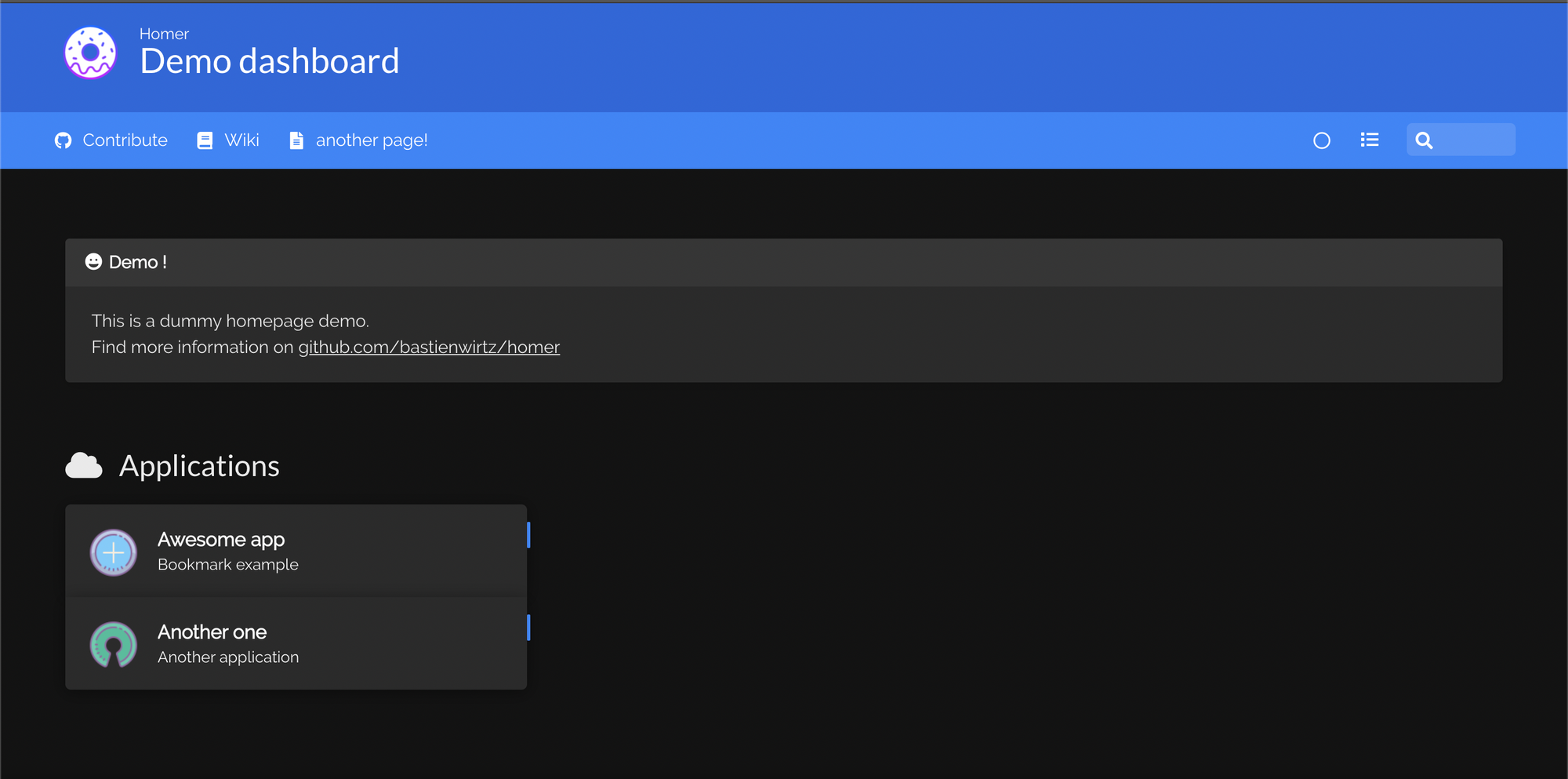Homer dashboard with Docker
Recently I have decided to get my home network in order, One of the things I realised was that I spend a lot of time trying to remember the IP addresses or URLs for services within my home, especially ones that I access infrequently.
At one point I did have a dashboard that was HTML but I never updated it and I decided to remove it a year or so ago.
After sitting on YouTube for a few hours watching rubbish I came across Homer, A simple to use Docker container that hosts am easily configurable dashboard with customisable designs.
Homer is configured using YAML making it very familiar to myself having used Docker for a number of years now.
Directory setup
In order to use Homer with Docker first I created a directory to store the configuration file and any other assets such as images. Mine are on an NFS share but this would also be the same for local files. My file structure is as follows:
1
2
3
4
5
📦dockerfiles
┣ 📂homer
┃ ┗ 📂data
┗ 📂portainer
┗ 📂data
As you can see, I create a directory for each container, then within that a subdirectory for each volume mapped to a container folder, usually this is just data, but some containers require more.
Docker
The container can then be launched one of two ways, via command, or via docker-compose.
I use portainer, linked to a GitHub repository that will re-deploy any time that I update the docker-compose.yml file on GitHub (more on that in another article!)
CMD
1
2
3
4
5
docker run -d \
-p 8080:8080 \
-v /dockerfiles/homer/data:/www/assets \
--restart=always \
b4bz/homer:latest
Here we are creating a container without loading it to shell with -d, then we link the docker host port with the docker container port -p 8080:8080, next, map the data folder on our docker host to the assets on the container -v /dovkerfiles/homer/data:/www/assets the assets folder contains the config file as well as images. We always want the container to restart if the host reboots --restart=always and lastly we specify the image and what version we would like to use b4bz/homer:latest
Compose
Here we essentially have the same configuration as the docker command, the one small change I have made though is to use a Docker Volume to map the volumes from OS to Container, this is the preferred method.
1
2
3
4
5
6
7
8
9
10
11
12
13
14
15
16
17
version: "3.6"
services:
homer:
image: b4bz/homer
container_name: homer
hostname: homer
volumes:
- homer_data:/www/assets
ports:
- 8080:8080
volumes:
homer_data:
driver_opts:
type: none
device: /mnt/nfs/dockerfiles/homer/data
o: bind
Once you have the docker-compose.yml file you can run docker-compose up -d which will create the volume, download the image and start the container.
Accessing the Homer dashboard
Now that the container is up and running you can access it via:
1
http://<docker-host-ip-address>:<port>
So in my case this would be:
1
http://172.16.20.4:8080
If everything has worked as expected you should see the following demo dashboard:

For more information on how to configure this dashboard check out this article where I cover the configuration of the dashboards in more detail.
Hopefully this information was useful for you, If you have any questions about this article, share your thoughts and comment in the discussion below or head over to my Discord.